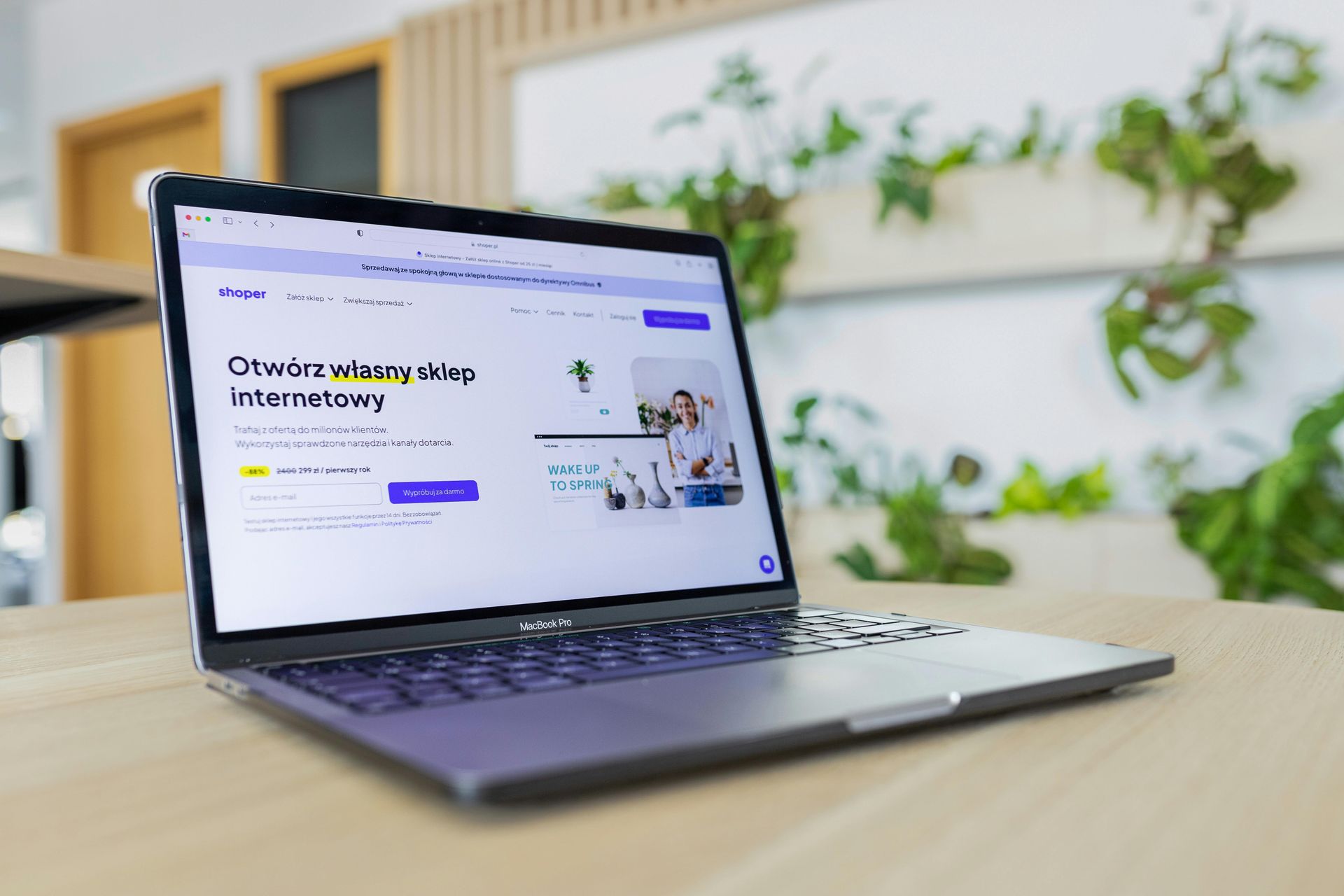A Website Shouldn’t Just Exist—It Should Sell
Why Every Page, Button, and Pixel Needs to Drive Revenue (Not Just Exist Online)

The Digital Storefront Mindset
In today’s business world, your website is your storefront, your first impression, and your best salesperson—all rolled into one.
Yet too many businesses treat their websites like digital brochures: static, pretty, and passive.
A good website isn’t just about being online. It’s about selling—actively engaging, nurturing, and converting visitors into customers.
If your website looks nice but doesn’t bring in leads, calls, or sales, it’s not an asset. It’s a liability.
Let’s break down why your website needs to be a revenue driver, how to build one that works around the clock, and what most companies get wrong (and how you can fix it).
Part 1: Why Existing Online Isn’t Enough Anymore
1.1 The Rise of Digital First Impressions
Before customers step into your office, call your number, or meet your team, they visit your website.
In fact:
- 75% of users admit to judging a company’s credibility based solely on its website (Stanford Web Credibility Research).
- 94% of first impressions relate to design.
It’s not just about looking professional. It’s about communicating trust, value, and action immediately.
Attention spans are short. Expectations are high.
If your website isn’t helping you close business, you’re not even in the running.
1.2 The Problem with "Pretty but Passive" Websites
There’s a difference between designing for aesthetics and designing for conversion.
Pretty websites win awards.
Conversion-focused websites win customers.
A passive website:
- Showcases company info without a clear next step
- Has scattered calls-to-action (CTAs) or none at all
- Looks good but doesn’t perform well on mobile or SEO
A selling website:
- Guides visitors intentionally through a journey
- Presents value and social proof early
- Has clear CTAs driving toward lead capture or purchase
Without strategic design, your website becomes an expensive digital billboard no one calls.
Part 2: Key Ingredients of a Website That Sells
2.1 Clear Value Proposition (Immediately)
Visitors decide within seconds whether they’re staying or bouncing.
Your homepage (and every landing page) should instantly answer:
- Who you are
- What you offer
- Why it matters to them
- What to do next
This clarity keeps people from bouncing—and moves them deeper into your funnel.
Example:
Instead of "Welcome to ABC Consulting," try:
"We Help B2B Companies Double Sales in 6 Months—Without Growing Their Team."
Clear. Specific. Impactful.
2.2 Conversion-Optimized Design
Every part of your site should gently—but firmly—push visitors toward a next step.
This includes:
- Strategically placed CTA buttons ("Book a Call," "Get a Free Quote," "Download Now")
- Lead magnets (free reports, trials, demos)
- Simplified navigation that leads toward conversions, not distractions
- Action-focused layouts (Z-patterns, F-patterns)
Design isn’t just decoration. It’s navigation toward a sale.
2.3 Social Proof
If you say you’re great, that’s marketing.
If your customers say you’re great, that’s
proof.
Selling websites embed:
- Testimonials
- Client logos
- Case studies
- Video reviews
- Certifications and awards
Social proof reduces buying anxiety—and increases conversion rates dramatically.
2.4 Mobile Optimization
Over 60% of website traffic is now mobile.
If your site isn’t optimized for mobile users, you’re losing leads before you even get a chance.
That means:
- Lightning-fast load times
- Mobile-friendly menus and CTAs
- Text that’s easy to read without zooming
- Clickable phone numbers and forms
Remember: Selling happens on the devices people are already using.
2.5 Fast Load Speeds
If your site takes longer than 3 seconds to load, you lose almost half your visitors (Google research).
A selling website is built for speed:
- Compressed images
- Optimized code
- Minimalistic, lightweight themes
- Proper server infrastructure
Every extra second kills conversions.
Part 3: Building the Sales Machine Behind Your Website
3.1 Capture Leads First, Sell Second
Not everyone will buy immediately—but you can capture them for later.
Lead capture tactics:
- Popups (timed or exit-intent)
- Content upgrades (free guides, checklists)
- Chatbots offering help or demos
- Newsletter sign-ups with value-driven incentives
Every visitor should have a low-risk way to engage further—even if they aren’t ready to buy today.
3.2 Funnel Them into a Journey
Once you capture a lead, don’t leave them hanging.
Selling websites connect to automated systems that:
- Send nurturing emails
- Offer demos or webinars
- Share customer success stories
- Provide discounts or reminders
A website without a connected sales funnel is like a store with no cashier.
You want a seamless flow from discovery → interest → decision → purchase.
3.3 Smart Analytics and CRO
You can’t fix what you don’t measure.
A true selling website has:
- Google Analytics (or GA4) installed
- Event tracking (form submissions, clicks, scroll depth)
- Heatmaps and session recordings
- Split testing (A/B) of pages and CTAs
This data lets you continuously optimize for higher conversion rates.
Part 4: Why Most Websites Fail to Sell—and How to Avoid It
4.1 Designed by Artists, Not Marketers
Many sites are built by graphic designers—not conversion specialists.
Pretty sites win awards. Strategic sites win customers.
Choose the second every time.
Solution: Work with agencies who understand both design and digital marketing.
4.2 No Clear Path to Purchase
If it’s unclear how to work with you, visitors won’t.
Solution:
Have one clear, visible CTA on every page.
Guide users toward it with visual hierarchy, contrast, and repeated prompts.
4.3 Lack of Trust Builders
Visitors are skeptical.
If your site lacks reviews, case studies, guarantees, or a visible brand story, they’ll hesitate to buy.
Solution:
Embed social proof generously. Make testimonials part of your design—not an afterthought.
Part 5: The Real ROI of a Selling Website
When your website is built to sell:
- Your lead generation costs drop (because organic visitors convert)
- Your customer acquisition costs fall (better conversion rates)
- Your brand reputation strengthens (better user experiences)
- Your revenue grows passively (24/7/365)
Your website becomes an asset—not an expense.
Over time, a high-converting website can outperform any other marketing investment you make.
Conclusion: Your Website Should Earn Its Keep
In today’s marketplace, being online isn’t enough.
Looking good isn’t enough.
Existing isn’t enough.
Your website should:
- Earn attention
- Build trust
- Capture leads
- Nurture relationships
- Close sales
Anything less is wasted opportunity.
At Proshark, we believe every pixel should have a purpose—and that purpose is to help you grow.
If your current website isn’t selling for you, it's time for a change.
A website built to sell isn’t an upgrade. It's a
necessity.
Ready to turn your website into your most powerful salesperson?







